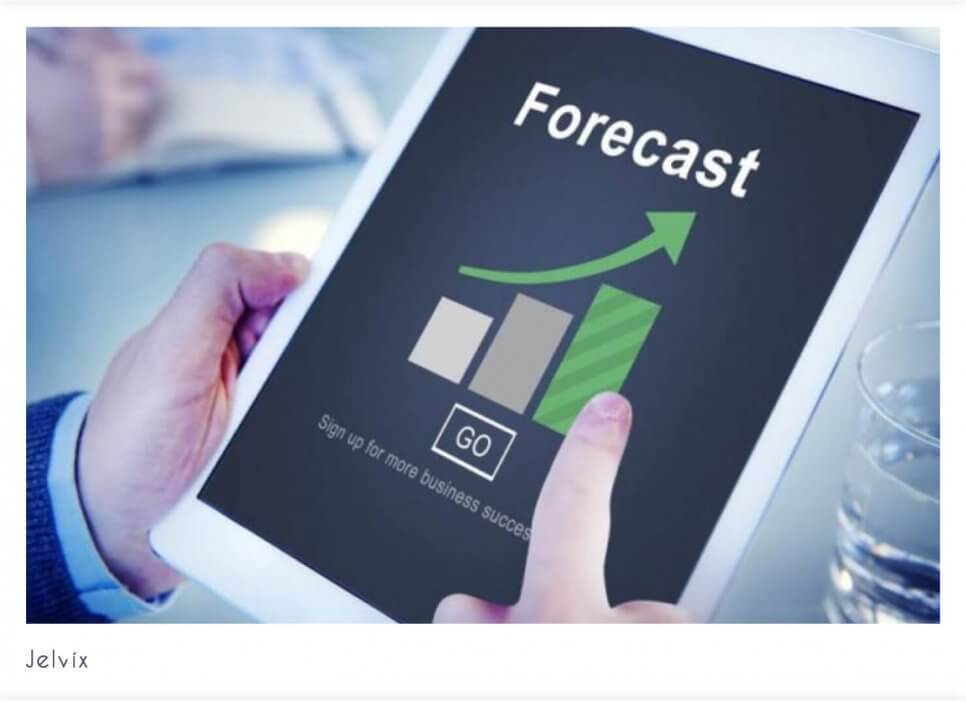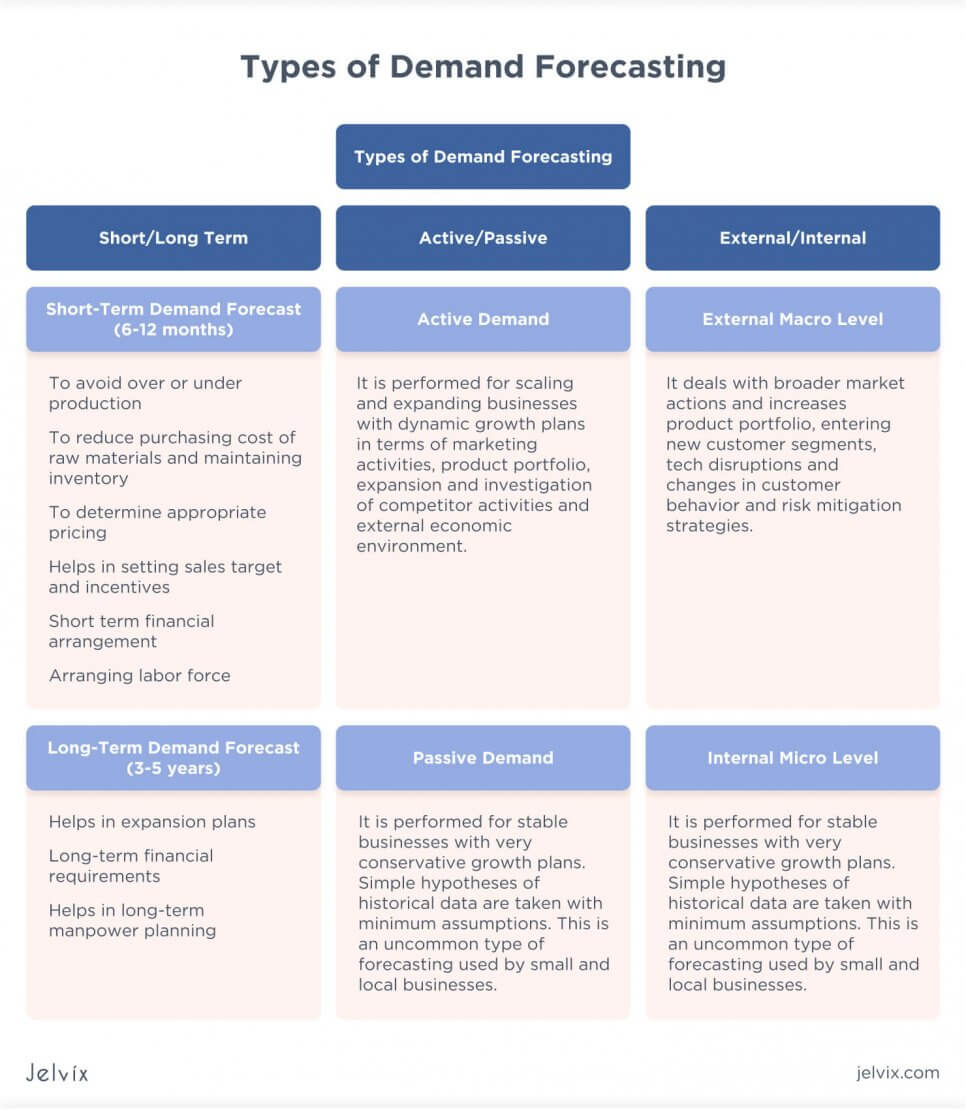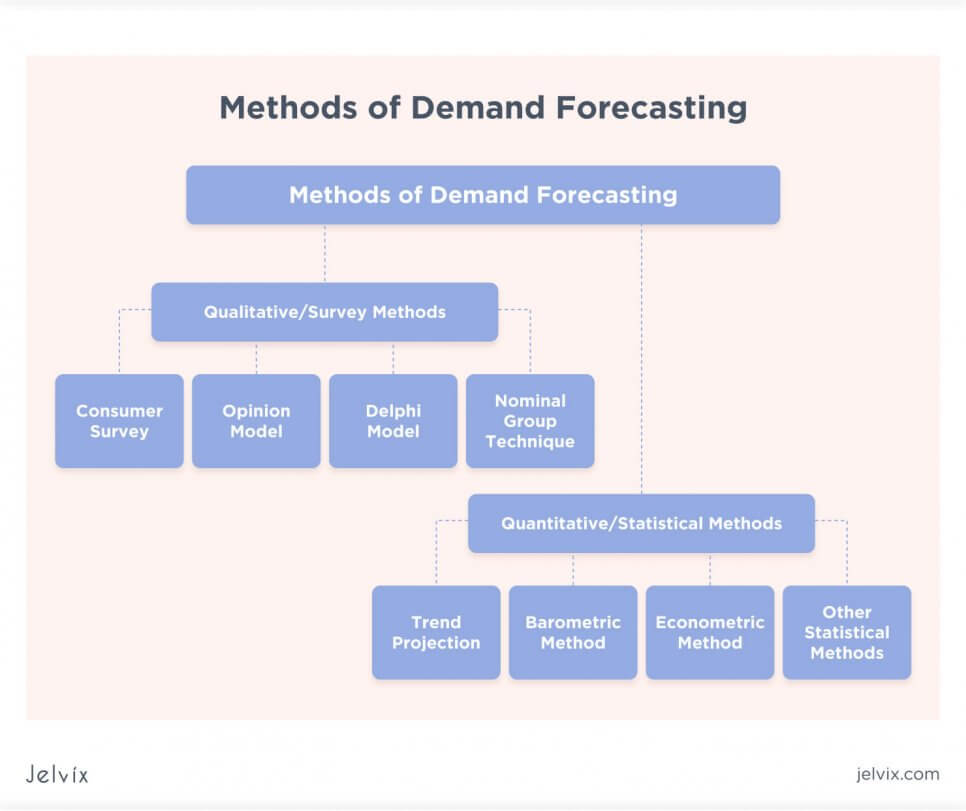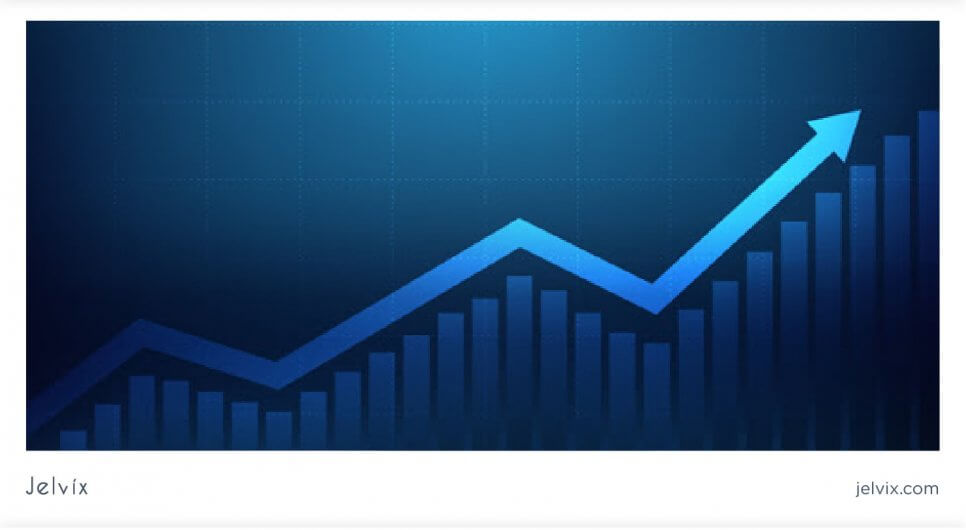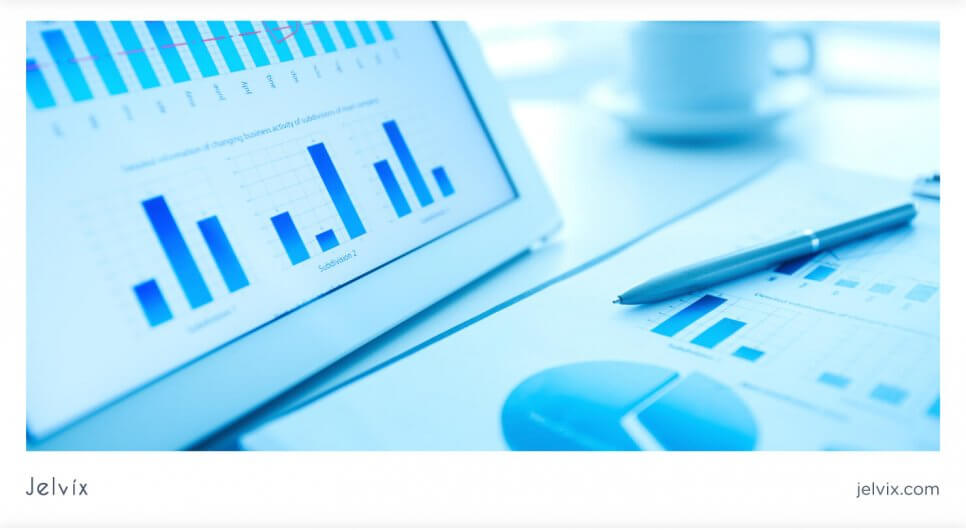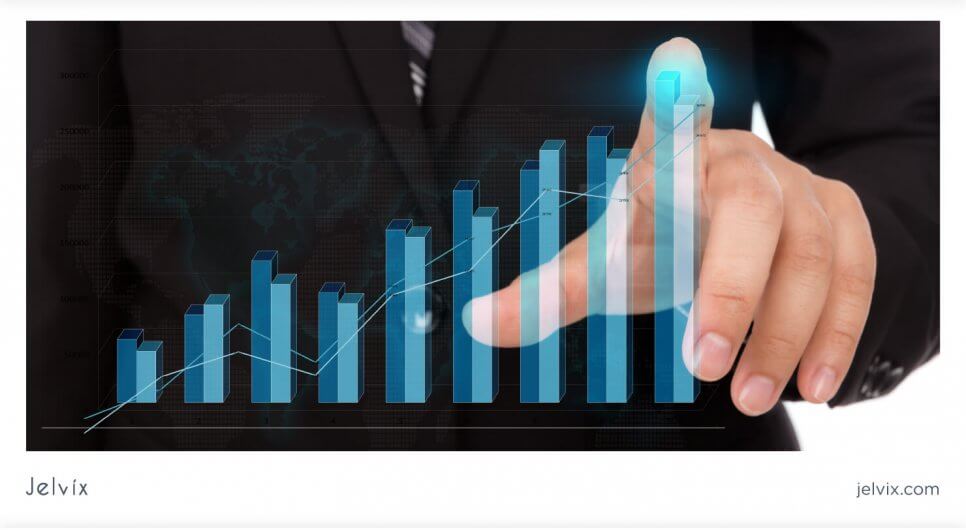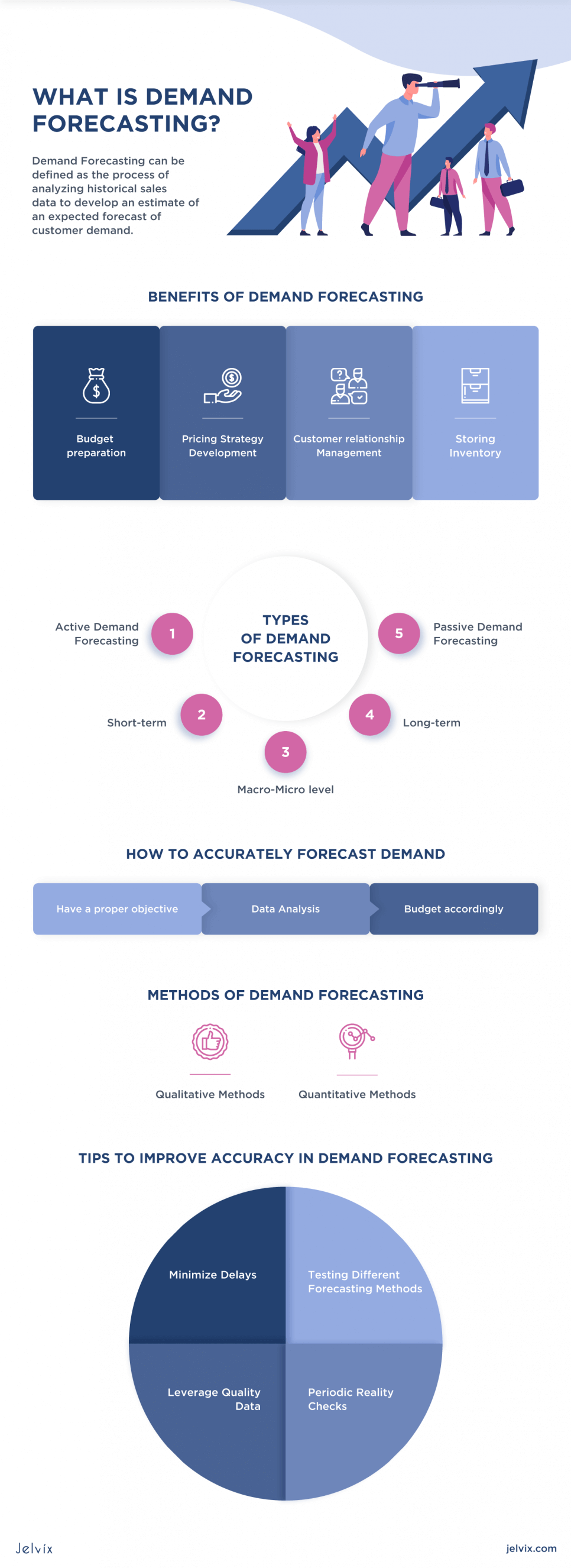Running a successful business and keeping a regular check on all the activities is quite a challenging task. You need to look up so many things like the number of inventory units required to be in full stock or how often you need to replenish inventory, and how those projections will change over time.
If your business is generating gradual sales or is in high-growth mode, this article will be perfect for you as it will guide you properly to improve your ability in Demand Forecasting.
What is Demand Forecasting?
Demand Forecasting can be defined as a process of analyzing historical sales data to develop an estimate of an expected forecast of customer demand. In business, Demand Forecasting gives us an estimate of the number of goods and services that the customers will likely purchase in the future.
Critical business premises like turnover, capital expenditure, risk evaluation, profit margins, cash flow, capacity planning are all basically dependent on Demand Forecasting. If explained briefly, Demand Forecasting helps the business estimate the total sales and revenue for the upcoming future.
Benefits of Demand Forecasting
Demand Forecasting is essential for e-commerce as you cannot run a successful business without a thorough understanding of demand. Companies aren’t capable of making the right decisions about marketing spendings, production, staffing, etc.
The accuracy of Demand Forecasting is not exactly 100%. Still, there are steps you can take to improve production lead times, increase operational efficiencies, save money, launch new products, and provide your customer with better quality and satisfaction. Demand Forecasting will help you in the following ways.
-
Budget Preparation
Demand Forecasting helps make efficient financial decisions and reduce risks that impact profit margins, cash flow, expansion opportunities, operating costs, inventory accounting, staffing, resource allocation, and overall spendings. All tactical and operational plans are dependant on forecasting demand.
-
Pricing Strategy Development
Demand Forecasting is not all about perfecting a business’s production schedule to supply demand, but it also helps in pricing products based on their demand. Understanding the market and potential opportunities can lead to the growth of the business. The best strategy is to formulate competitive pricing, employ the right marketing tactics, and invest in their development.
If you choose to cut prices or place an item on promotion, the demand for it may temporarily increase. The promotion will be beneficial as it will give an instant boost to sales.
If a product is in high demand and has a limited supply, you can use the scarcity principle to slightly raise the prices as an exclusive offer.
-
Customer Relationship Management
If customers want to buy something, they expect the product to be available at the moment. Demand Forecasting helps you predict which categories of products will be purchased in the next period from a specific store location. Having a product available at the right time increases customers’ satisfaction and commitment to your brand.
-
Storing Inventory
Demand Forecasting can help you estimate inventory purchase orders and warehousing as more inventory requires more storage. Good inventory management means having enough product on hand that it is available for customers but not too much to result in extra bills for its storage.
Keeping a regular check on inventory levels lets you easily restock and forecast inventory with time.
Types of Demand Forecasting
There are various ways to perform Demand Forecasting for a business. They can be broadly classified based on the level of detail, the time period, and the scope of the market considered.
-
Macro-Micro level
Macro-level Demand Forecasting usually deals with broader market movements that depend on the macroeconomic environment. External Forecasting is generally accomplished to estimate the business’s strategic objectives like product portfolio increment, introducing new customer segments, technological disruptions, and risk mitigation strategies.
At the same time, Demand Forecasting at the micro-level can be specific to a particular business, industry, or customer segment.
-
Short-term
Short-term Demand Forecasting is carried out for a shorter time period, usually from 3 to 12 months. The seasonal pattern of demand and the effect of strategic decisions on customer demands are taken into consideration.
-
Long-term
Long-term Demand Forecasting is carried out for longer than a year. It aids in identifying and planning for seasonality, annual patterns, production capacity, and expansion over a much more extended period of time.
-
Active Demand Forecasting
Active Demand Forecasting is carried out to categorize and diversify businesses with aggressive growth plans in terms of marketing strategies. It keeps checking on activities like product portfolio expansion, consideration of competitor activities, and external economic environment.
-
Passive Demand Forecasting
This type of Demand Forecasting is carried out for stable-running businesses with conservative growth plans. Simple extrapolations of historical data are extracted out with minimal assumptions. This type of Forecasting is rare and usually is limited to small and local businesses.
Methods of Demand Forecasting
The selection of an appropriate method for Demand Forecasting is an important step. Demand can be forecast with two different methods, i.e., qualitative methods and quantitative methods.
Let’s take a look at machine learning applications in multiple industries, from digital businesses to industries that are still transforming, to understand the benefits of this technology.
-
Qualitative Methods
The results obtained from qualitative Demand Forecasting are generally more descriptive and detailed than quantitative methods because they don’t necessarily rely on numerical values as much as they require assumptions and judgment to predict future demand.
The examples of qualitative Demand Forecasting are discussed below.
-
SalesForce Opinion
In this technique, the Salesperson in the team is asked for their opinions and inputs on expected demand. Each Salesperson evaluates their respective regions and product categories for the provision of their customer demand. Finally, the Sales Manager analyzes all the demands and generates the final version of Demand Forecast after overall evaluation.
-
The Delphi Technique
A professional team is appointed to produce a Demand Forecast. Each expert is responsible for generating a forecast of a particular segment assigned to them. After the initial forecasting round, each expert analyzes their forecast and discusses it with other experts. A consequent forecast is made by the team again, and the process is repeated until all the experts reach a general agreement.
The Delphi technique’s advantage is that it involves the opinions of a diverse group of thought leaders and professionals. Still, it often takes longer to conclude due to so many different views involved.
-
Market Research
In the market research method, surveys are explicitly deployed for customers to generate potential demand. Such surveys are generally in the form of queries and suggestions seeking personal, demographic, preferential, and financial information directly from end customers.
Since this technique relies on a random sampling basis, data needs to be considered in terms of the survey regions, locations, and demographics of the end-customer. This type of technique could prove beneficial for products that have little to no demand history.
The advantage of this method is that your market research efforts will tell you if there is anything wrong with your product and give you an idea about where to improve.
There are a couple of disadvantages to market research as it takes a lot of time to collect and analyze the data from end-customer, which may cause missing out on market share. Plus, market research will cost you a bit more money.
-
Quantitative Methods
The quantitative data method focuses on hard numbers to express variables. For example, waist size, height, stride length, and specific size selection would be considered quantitative.
From the Demand Forecasting standpoint, this method typically looks at statistical data, both in the present and the past, to make decisions for the future.
Some techniques used in quantitative methods are:
-
Econometric forecasting technique
Econometric Forecasting utilizes more complex relationships between demand and influencing factors to understand the relationship between them. An equation is derived and analyzed to ensure a reliable statistical representation. Finally, the projected values of the influencing factors are derived into the equation to generate an accurate forecast.
Econometric Forecasting generally focuses on different aspects of economic interactions with each other. For example, how spendings could influence income, interest rates, debt, unemployment, etc.
-
Trend projection method
This method is suitable for businesses with extensive sales data with a history of 20-24 months. The data extracted generates statistical time series representing previous sales and projected demand for a specific product category under normal conditions by plotting a graph of the given information.
The benefit of the trend projection method is that it is based on numerical data and can be altered in several different ways. The analysis is more precise, and it can be replicated or refined according to need.
The down point of trend projection is that it does not address the underlying problems that may have catalyzed the trend. For example, a natural disaster, like an earthquake or a wildfire, could present you with a slanted view. More data is required to provide accurate projections.
-
Barometric technique
In this technique of Demand Forecasting, current events are recorded for the prediction of the future. In the Demand Forecasting process, this is accomplished by having a look at the economic indicators. Mainly, a demographic evaluation like the Leading series, Lagging series, or Concurrent series is arranged to generate the Demand Forecast.
The barometric forecasting technique’s upside is that it solves the issue of identifying the value of an individual variable. A significant disadvantage of this method is that we can’t use it for long-term forecasting.
Example of Demand Forecasting
A low-scale business might have a goal of a conventional growth plan, whereas another company may be scaling for aggressive growth plans in the future. Here is a scenario that will help you to give an idea for performing Demand Forecasting.
Let’s say a gift shop looks at sales trends from last year’s Thanksgiving week to prepare adequate inventory levels for the next season. They analyze the sales leading into that week last year for a seasonal product.
Everything is going great, and the shop is generating enough sales for them. But a couple of months ago, a competing shop opened few blocks away, so they’re unsure how Thanksgiving demand will be affected if local customers buy products from their competitor.
At the same time, many families continue to shift into the neighborhood, and they’ve still grown at a reasonable rate since the competing chain opened.
They plan to launch a few more ad campaigns than last year through channels that provided a good ROI for them in the previous season and offer some new deals and promotions to position themselves as the go-to Thanksgiving place. Their calculations project a 5% increase in sales than the previous year.
How to Accurately Forecast Demand
Forecasting demand the right way is not an easy task. You have to be flexible enough to handle irregular influxes but also take a long-term approach. Here are some tips for performing Demand Forecasting the right way to enhance your business growth.
-
Have a proper objective
When starting Demand Forecasting, a specific purpose should be determined first. At its core, it predicts what, how much quantity, and what time the customers will purchase. Choose the most suitable period, the specific product or category you’re taking a look at, and whether you’re forecasting demand generally or for a particular group of people.
You have to make sure that it satisfies your financial planning, product marketing, logistics, and operations teams in a non-biased way.
You need to understand your objectives for the right demand capacity planning, which will help you in decision-making forecasting processes to understand consumer behavior better and more efficiently.
-
Data Analysis
Integrating all of your sales channels’ records can provide a clearer picture of actual product demand and insight into sales forecasts. Seeing the date and time of orders, SKU(s) ordered, and sales channel will help you forecast growth and trend projection at a more specific level and look back to see how your forecasts came up with reality.
Remember that you should not ignore e-commerce returns, which can be costly. Products with high return rates should be estimated, and adjustments should be made based on the reason for returns. If 10% of items get sent back, and you’re able to decrease it, your production may need to be adjusted as well.
In addition to your past sales data, you may also need to pull in other types of data like market conditions. For ensuring reliability and accuracy, data must be well prepared.
-
Budget accordingly
Once you obtain a feedback loop, you can set your next forecast more accurately and update your budget to allocate funds where they should be going depending on growth goals. Demand Forecasting helps you reduce the costs caused by inventory handling, plan marketing spend, future headcount, production of inventory and its needs, and even new products.
Tips to improve accuracy in Demand Forecasting
If you have an accurate forecast, you will indeed produce better results. Generating quick, timely, and precise predictions will strengthen your company significantly. The demand forecast is an essential point to manage your decisions. Here, we provide you with a few useful tips which can improve accuracy in your Demand Forecasting.
- Testing Different Forecasting Methods
When you consider your statistical records from a range of viewpoints, your forecast will be significantly more precise. It could be possible that one model is more suitable to your business than another; taking as many angles as possible into consideration will highlight gaps in reasoning and provide a more flexible and exact result.
- Minimize Delays
Time lag in data collection will seriously impact the precision of your forecast. Ideally, you want to extract information in real-time to cut down these delays. Late actions can leave a negative impact throughout the supply chain, reducing operational regulations and leaving you behind in the competition. A regular and integrated planning process will aid you in avoiding high-cost overstocks and stock-outs.
- Periodic Reality Checks
You should update your forecast regularly with the latest sales figures as soon as they are available. The imbalances you discover can be used to adjust your projections to reflect what’s going on in the market. Consider the competitors’ activities and always be mindful of new players taking a step in the market as the environment tend to change quickly.
- Leverage Quality Data
Statistical forecasting relies altogether on historical data. The details applied for the forecasting model must be complete, accurate, of perfect quality, and drawn from a suitable period in your company’s record. This is the correct way to represent a genuine demand accurately.
Conclusion
Demand Forecasting helps businesses conclude an appropriate decision that affects many factors, from inventory management to supply chain optimization.
With customer demands changing faster than ever, businesses need to forecast the demand the right way because accurate forecasts allow you to grow and enhance your sales while improving cost efficiencies from seed to shelf, from ideation to product handling, and from the factory floor to the customer’s door.
Need a qualified team of developers?
Unlock new business opportunities with the first-rate dedicated development team.



